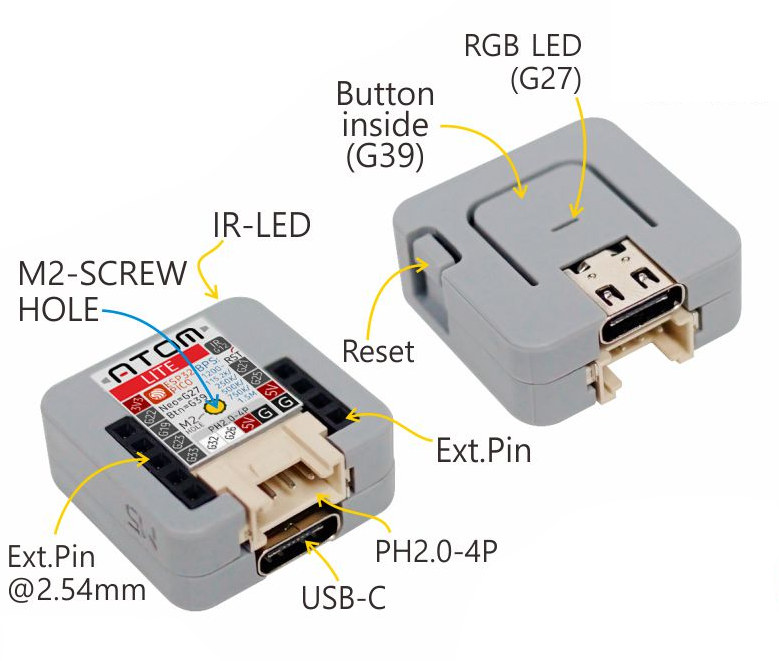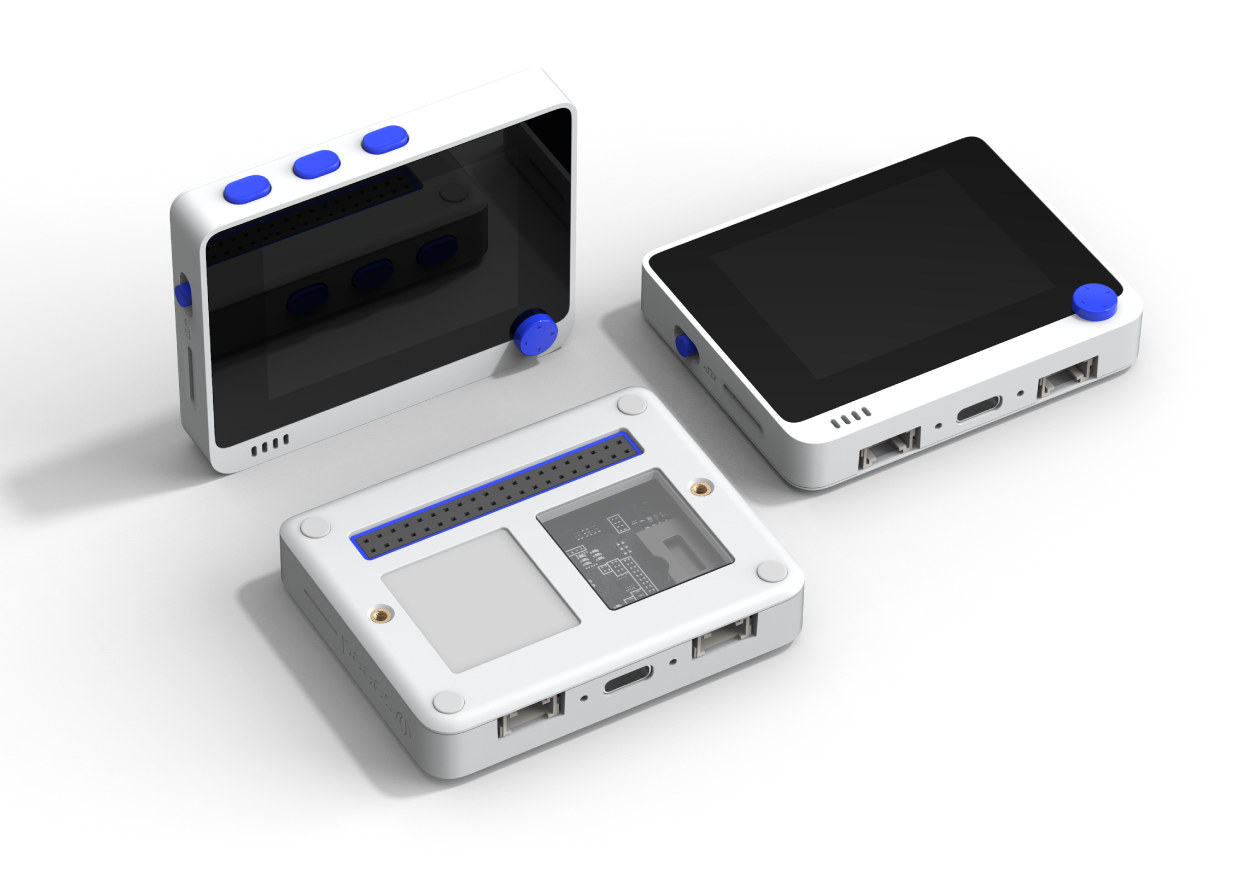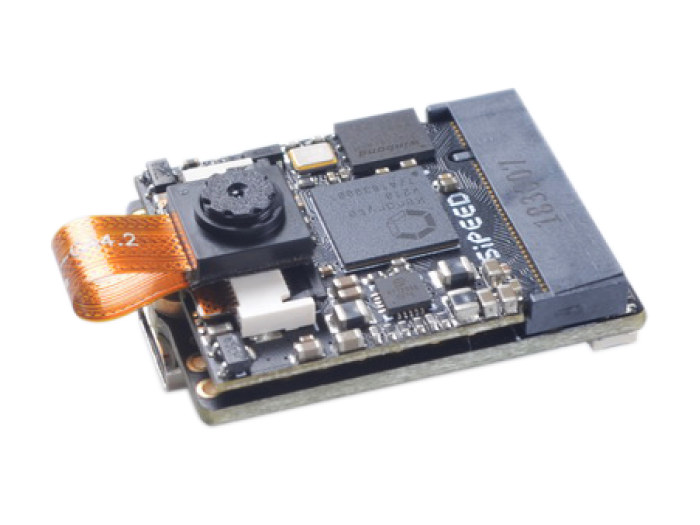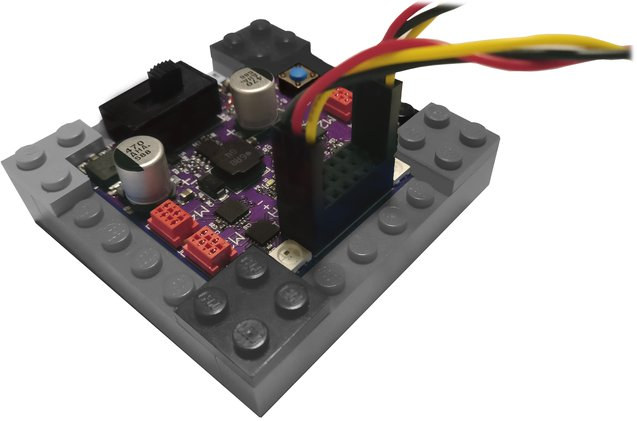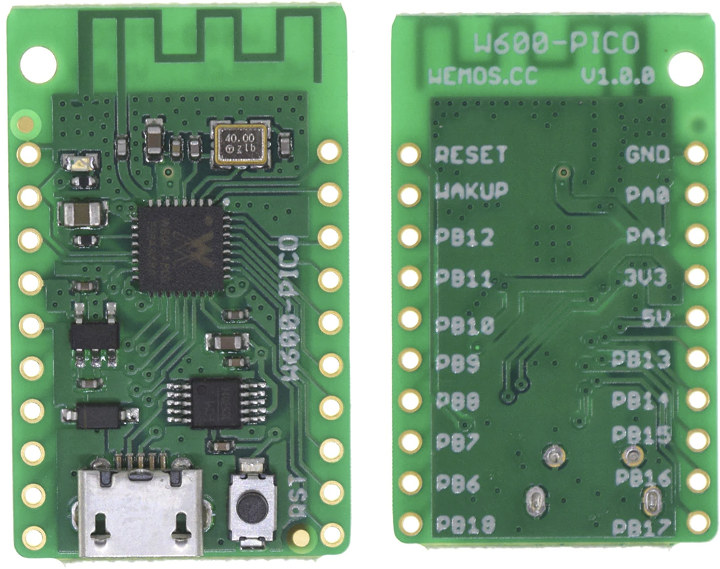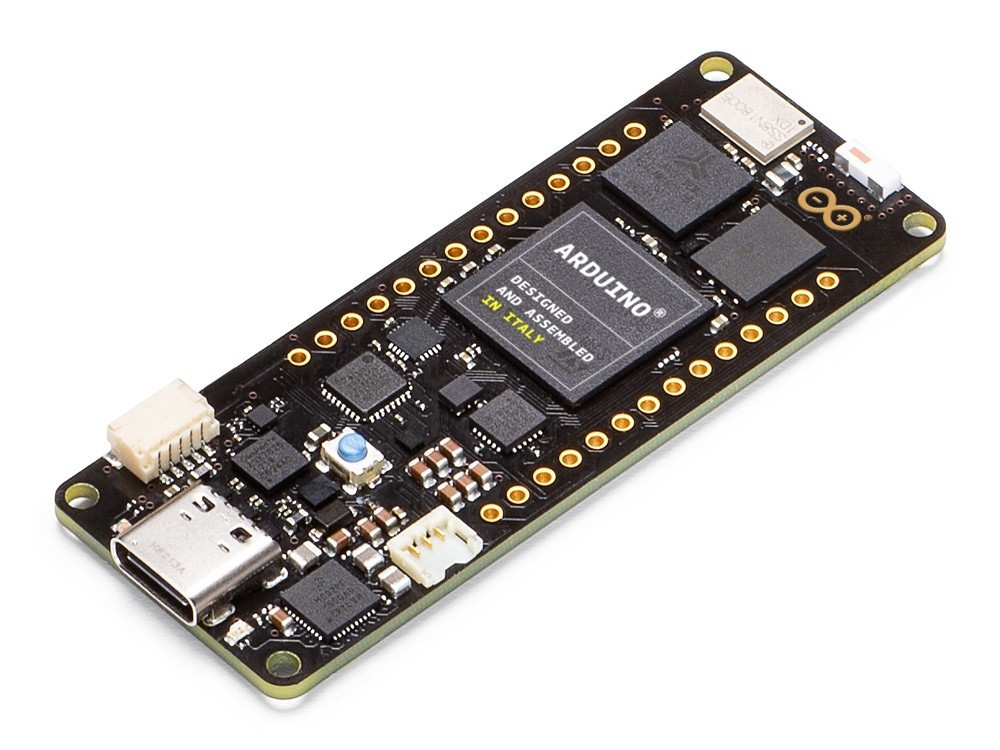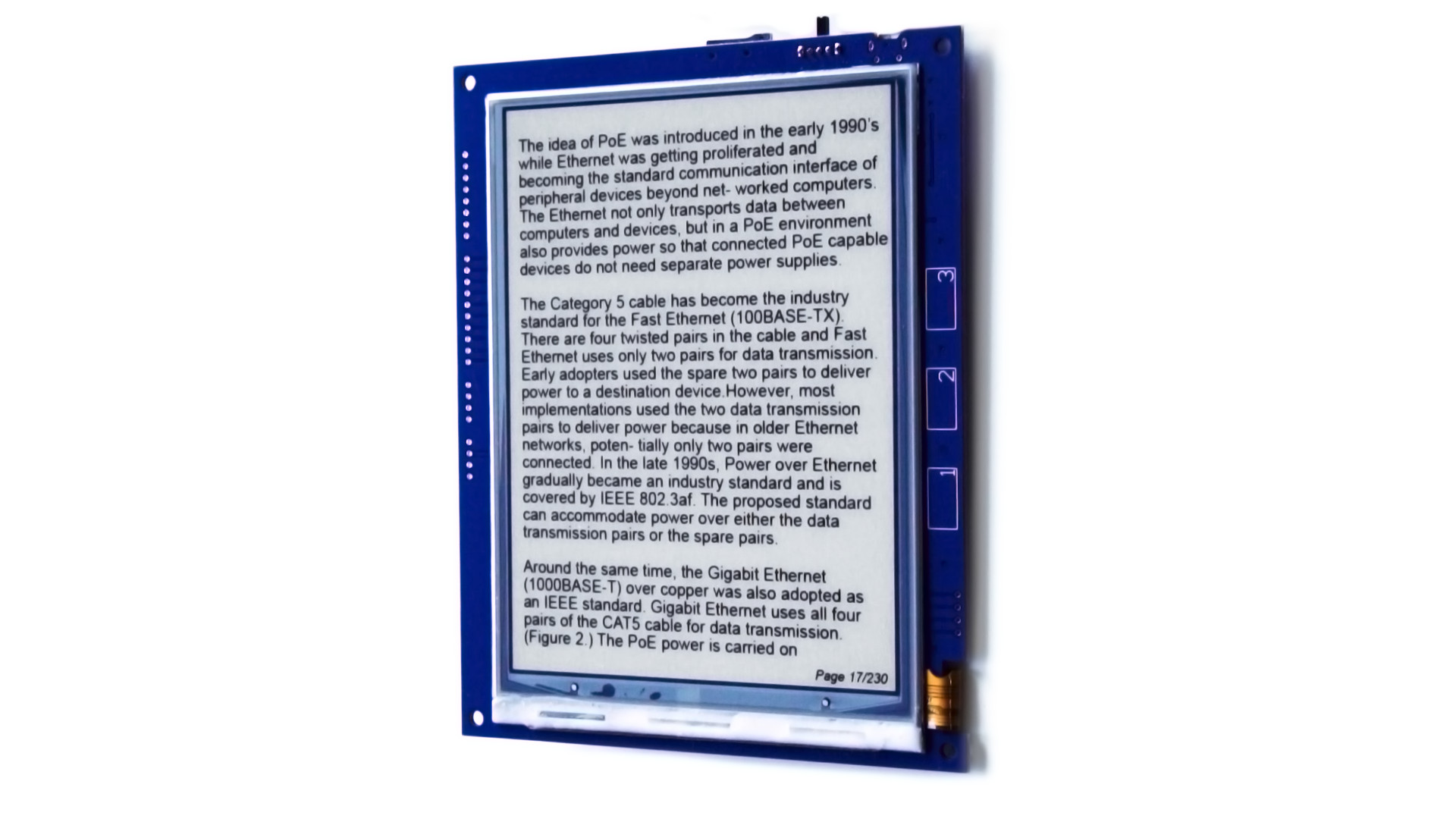When working on a project you may need an MCU or MCU board, an external display, a breadboard, and other accessories like sensors and jumper cables. It does the job, but it can be messy. Recently, we wrote about M5Stack M5StickV AI camera, but the company is better known for its ESP32 IoT development kits enabling neater project thanks to hardware that integrates MCU, I/O headers, display, and sensors into an enclosure. Their latest offerings are ATOM series toolkits that come in two versions: ATOM Lite and ATOM Matrix. Let’s have a look at both. M5Stack ATOM Lite Specifications: SiP – ESP32-PICO-D4 system-in-package with ESP32 dual-core processor with WiFi 4 and Bluetooth 5.0/5.1 Storage – 4 MB flash Crystal oscillator and passive components USB – 1x USB Type-C port Expansion 9-pin header with 6 GPIOs compatible with jumper cables 4-pin PH2.0 connector with 2x GPIO, 5V and GND Misc – […]
Wio Terminal Features Microchip SAMD51 MCU, Dual-Band WiFI & Bluetooth WiFI, and 2.4″ LCD
Microchip SAM D5x Arm Cortex-M4 microcontrollers were introduced in 2017, and the next year we started to see Arduino or MicroPython compatible board brought to market including Adafruit Metro M4 or Tachyon boards. Seeed Studio has now introduced its own Arduino & MicroPython compatible SAMD51 platform with Wio Terminal also integrating an RTL8720DN dual-band WiFi 4 and Bluetooth 5.0 chip, and 2.4″ LCD display. There are also Grove connectors to add sensor modules, and a 40-pin header to use the device like a Raspberry Pi HAT. Wio Terminal features and specifications: MCU – Microchip SAMD51 (ATSAMD51P19) Arm Cortex-M4F microcontroller @ 120 MHz (can be overclocked to 200 MHz) with 192KB RAM, 512KB flash Storage – 4MB external SPI flash, MicroSD card slot up to 16GB Display – 2.4″ LCD screen with 320×240 resolution (ILI9341 driver) Audio – Microphone and buzzer Connectivity – Dual-band WiFi 4 802.11b/g/n and Bluetooth 5.0 via […]
$55 Watchy Smartwatch Combines ESP32 WiFi & Bluetooth SoC with E-ink Display
SQFMI has designed a (mostly) open-source hardware smartwatch based on an ESP32-S wireless module for WiFI and Bluetooth connectivity, and equipped with an E-ink display of 200×200 resolution. Watchy also comes with a BMA423 accelerometer, four buttons, a DS3231 real-time clock, and a vibration motor. The watch should last around 2 weeks on a charge. I mentioned the watch is “mostly” open source hardware because while the GERBER files, bill of materials (BoM) and the PDF schematics have been released on Github, the KiCAD schematics and PCB layout files have not so far. That still means you can understand the design, repair the design, or even make your own, but if you intended in modifying the design, you’d have some more work to do. Tom Fleet, writing for Hackster.io, does go through different sections of the schematics and explain what they do. One the software side, the watch can be […]
Sipeed M1n is a $10 M.2 Module based on K210 RISC-V AI Processor
Kendryte K210 is a RISC-V processor with AI accelerator found in boards such as Maixduino, Grove AI HAT, or HuskyLens among others, and enabling low-cost, low power AI applications such as face detection or object recognition. You can now add Kendryte K210 AI accelerator to any board or computer with M.2 socket or [Update: the M.2 connector pinout is non-standard] a USB-C port thanks to Sipeed M1n M.2 module that also comes with an M.2 to USB-C adapter. Sipeed M1n specifications: SoC – Kendryte K210 dual-core 64-bit RISC-V processor @ up to 400MHz with FPU, Neural-network Processing Unit (NPU), audio processor, built-in 6MB SRAM memory for CPU, and 2MB AI SRAM Storage – 128Mbit SPI flash Camera – 24-pin connector for DVP camera (OV0328 camera module provided as part of the kit) Host Interface – M.2 socket with some IOs and JTAG interface, accessible via Maix Nano M.2 to USB-C […]
Snekboard Controls LEGO Power Functions with CircuitPython or Snek Programming Languages (Crowdfunding)
LEGO has provided robotics kit for years, and LEGO blocks and accessories in general are great to build all sort of projects, so it’s not surprising third-parties have come up with LEGO-compatible boards and accessories for makers which include DFRobot BOSON kits, STEMTera smart breadboard, Brixo LEGO blocks with built-in electronics, and more. Snekboard is another option with the Microchip SAMD21 board designed to work with LEGO Power Functions motors and switches are programmable with MicroPyhon based CircuitPython or Snek programming languages. Snekboard hardware specifications: Microcontroller – Microchip SAMD21G18A Arm Cortex-M0 MCU with 256 KB flash and 32 KB RAM. Storage – 2MB SPI flash USB – 1x Micro USB port for power and programming Motor Control – 4x TI DRV8800 DC motor drivers tp provide up to 2.8A for LEGO motors and servos I/O- 8x GPIOs (3.3V) Misc – 2x RGB LEDs, 1x blue LED Power Supply 5V via […]
$2 Wemos W600-PICO WiFi IoT Board Ships with MicroPython Firmware
Wemos has designed some great WiFi IoT boards over the last few years with products like Wemos D1 mini or Lolin32 based on Espressif Systems ESP8266 and ESP32 processors respectively. But the company has recently launched its cheapest board ever, with W600-PICO board going for just $2.10 + shipping. The board is based on Winner Micro W600 Arm Cortex-M3 WiSoC, and comes pre-loaded with MicroPython firmware. Wemos W600-PICO V1.0.0 specifications: SoC – Winner Micro W600 Arm Cortex-M3 MCU @ 80MHz with 1MB Flash Wireless Connectivity – 2.4GHz 802.11 b/g/n WiFi 4 up to 150 Mbps USB – 1x Micro USB port for power and programming (via CH340 USB to TTL chip) Expansion – 2x 10-pin headers with 15x GPIO, 9x PWM, 1x I2C, 1x SPI, 1x UART, Wake Up, Reset, 5V, 3.3V, and GND signals; 3.3V I/O voltage. Misc – Reset button Power Supply – 5V via micro USB port […]
Arduino Portenta H7 STM32H7 Cortex- M7/M4 Industrial Board Runs Arduino Code, Python and JavaScript
Arduino is now at CES 2020 promoting its Arduino Pro all-in-all IoT solution for professionals with the Arduino Pro IDE, Arm Pelion IoT platform for device management, and a new Portenta industry-grade board family starting with Arduino Portenta H7 board powered by STMicro STM32H7 dual-core Arm Cortex-M7/M4 microcontroller. Arduino Portenta H7 Specifications: Microcontroller – STMicro STM32H747XI Cortex-M7 @ 480 MHz + M4 @ 200 MHz MCU with 2MB dual-bank Flash memory, 1 MB RAM, Chrom-ART graphical hardware accelerator System Memory – 2MB SDRAM (upgradeable up to 64MB) Storage – 16MB QSPI NOR Flash (Upgradeable up to 128MB) Connectivity 2.4GHz WiFi 802.11b/g/n up to 65 Mbps and Bluetooth 5.1 BR/EDR/LE via Murata 1DX module On-board 10/100M PHY Video I/F – MIPI DSI & 8-bit camera interfaces via 80-pin expansion connector, DisplayPort over USB-C port USB – 1x USB 2.0 Type-C port for power (PD), programming, and DisplayPort output I/Os Arduino MKR […]
Inkplate 6 ESP32 Wireless e-Paper Display Recycles Kindle E-reader (Crowdfunding)
Inkplate 6 wireless display is made from recycled e-Paper display taken from a used Amazon Kindle E-reader and adds WiFi (and Bluetooth) connectivity thanks to an ESP32-WROVER module featuring Espressif Systems ESP32 dual-core processor. The 6″ e-Paper display can easily be updated over WiFi, and used for a variety of applications or projects such as high-latency digital signage displays, collaborative task trackers, e-Paper typewriters, open-hardware E-readers, art projects and so on. Inkplate 6 specifications: ESP32-WROVER wireless module ESP32 dual-core Tensilica LX6 processor @ 240 MHz 8MB RAM, 4MB flash Connectivity – 802.11 b/g/n WiFi and Bluetooth 4.2 Display – 6″ e-Paper Display (ED060SC7) with 800×600 resolution taken from discarded Kindle readers; refresh time: 0.264 s; partial updates possible Storage – MicroSD card socket USB – 1x Micro USB Port for power and programming (via CH340C) Expansion EasyC / Qwiic connector with I2C Headers for power signals, I2C, SPI, ESP32’s GPIO, […]


